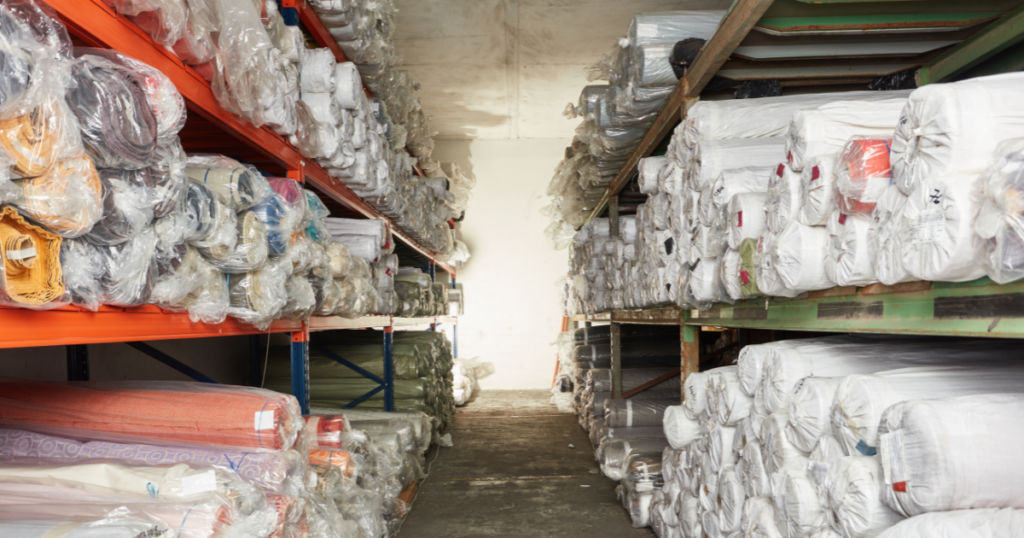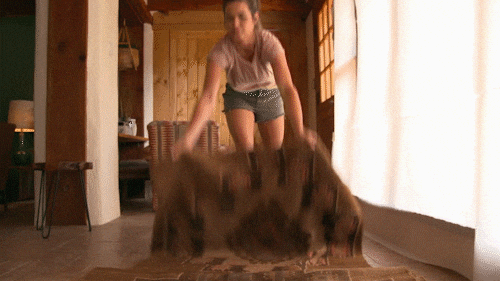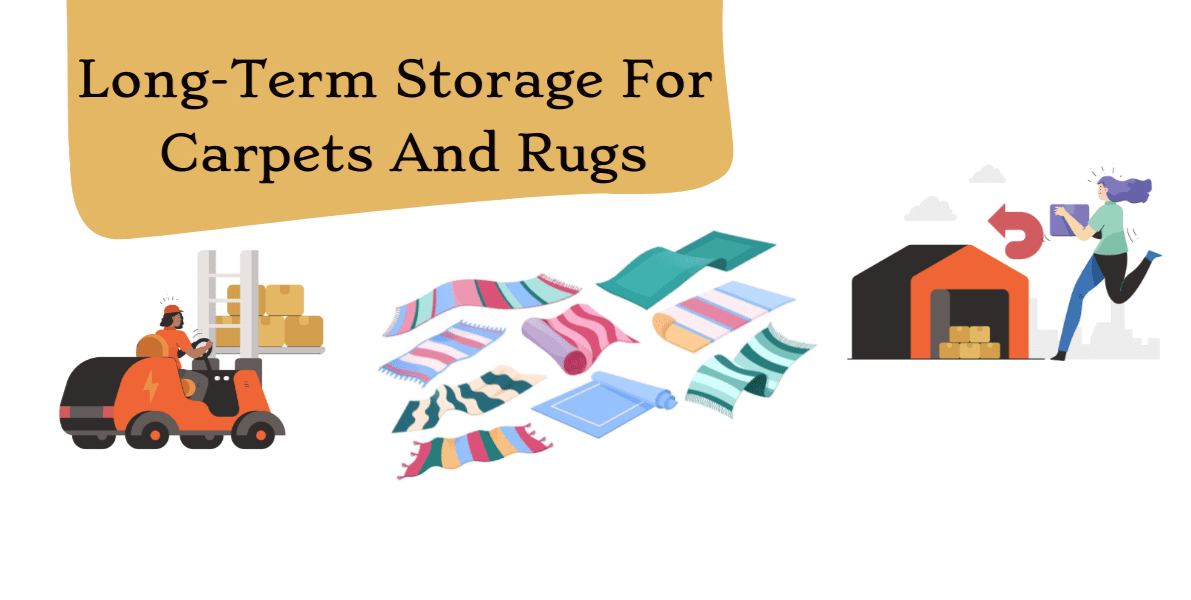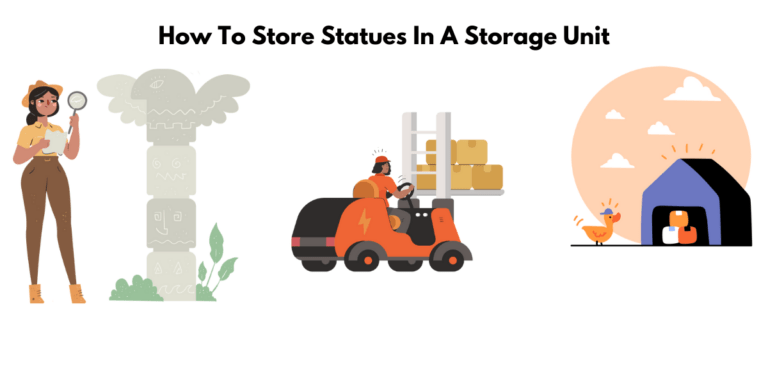From Big Carpets to Smaller Rugs: The proper preparation before you store rugs in a storage unit
How to Store a Rug Long Term
Do you have a rug that’s been in your family for generations? Or one that’s special to you? If so, it might be a good idea to store it properly.
Here are some helpful tips to help you store your rug long term.

What are the different types of rugs?
There are many rugs, but the most common is the Oriental rug and the Afghan rug. Often, these rugs feature intricate designs and colors that can be quite stunning. There are also area rugs designed to cover an entire floor or room. Finally, there are novelty rugs, which can be bought as a decorative pieces and are not necessarily meant for use.
Area rugs
Area rugs are floor mats placed in areas of a room that do not have carpet. There are many types of area rugs, each with its purpose. Area rugs come in various sizes, and the first and most fundamental decision you’ll need to make is the size of the rug. Fine area rugs are perfect for high-traffic areas or rooms with a lot of movement. Handmade area rugs are unique and handmade, typically with extra attention to detail. Rugs can be used in any room, whether formal or casual. Area rugs can be customized to match any room’s style.
Oriental rugs
An Oriental rug is a type of rug that is typically made in Asia, specifically in the Middle East and Persia. Oriental rugs are usually made of wool, silk, or both materials. They often feature intricate designs and bright colors.
Oriental rugs can be classified into different categories based on their place of origin. Persian rugs, for example, are made in Iran and are characterized by their use of geometric patterns. On the other hand, Afghan rugs are made in Afghanistan and tend to feature floral designs.
There are also different types of Oriental rugs based on their size. A room-sized rug is typically large enough to cover most or all of the floor space in a room. A hallway-sized rug is smaller and can be placed in an entryway or hallway. A scatter-sized rug is smaller and typically used as an accent piece or to cover a small area.
Persian rugs
Persian rugs come from Iran and other parts of the Middle East. They are made of wool and cotton and can be very intricate. Persian rugs are often very colorful and beautiful.
You should take care when storing your Persian rug, as they are delicate. Avoid high temperature or humidity levels, and make sure the rug is clean before storing it. You can also have your rug cleaned by a professional before storage.
Antique rugs
Antique rugs are a type of rug that is typically over 100 years old. They can be found at antique stores, online auctions, and sometimes even garage sales. It is important to regularly check an antique rug for damage and pests and to have it professionally cleaned at least once a year. When storing an antique rug, vacuum it first and then place a nylon screen over it before putting it away.
Tribal rugs
Tribal rugs are hand-woven pieces of art that come in various colors and patterns. They can be used as floor coverings or as part of a living room centerpiece. When selecting a tribal rug, it is important to consider its natural dyes and textures. Some rugs may have been treated with chemicals that can alter their colors or texture over time. It is also important to store the rug properly to avoid wrinkles and creases.
Braided rugs
Braided rugs are made by braiding together different strips of material. These rugs can be made from various materials, including wool, cotton, and jute. Braided rugs are usually made by hand, but they can also be made by machine.
A few different methods can be used to make braided rugs. One popular method is called the “latch hook” method. This method involves braiding together strips of fabric with a latch hook. Another popular method is called the “twisted cord” method. This method involves twisting two or more cords together to form the braid.
There are many different styles of braided rugs available on the market today. Some popular styles include the oval braided rug, the round braided rug, and the rectangle braided rug. Braided rugs come in various colors and patterns, so it is easy to find one that will match your home decorating style.
Leather rugs
Leather rugs are rugs made from leather. They are commonly used in homes as floor coverings. Leather rugs must be stored on a raised surface to avoid moisture build-up. They should also be kept away from walls to avoid being damaged. If there is a leak, the rug can be covered with a plastic crate to stop the leak. Airflow is important to prevent moisture build-up on the rug.
Long term rug storage

If you’re considering long-term rug storage, be sure to factor in the costs of moving and storing the rug. Rugs can weigh a lot, so it’s important to find a storage solution that can accommodate the weight and size of your rug. You might also consider renting a storage unit from a commercial facility or using a professional moving company.
Clean it
Thoroughly cleaning the carpets or area rugs is important because it helps ensure that your carpet will remain in good condition. Regular cleaning prevents diseases like ringworm and dust mites from spreading.
Clean the carpet by vacuuming first. Make sure to follow the manufacturer’s specifications for this process. Dusting should also be done, but it is optional. Be careful not to vacuum any loose or fragile items with your vacuum cleaner.
If you want to clean your carpet thoroughly, start by washing it with warm water and soap. Next, use low-heat wash settings on the machine. The last step is drying in a tumble dryer without fabric softener or bleach (use vinegar if needed).
The first step to cleaning your carpet is to place it on a concrete or vinyl floor. Then, run the carpet cleaner and solution over the area of concern.
Rugs and carpets should be cleaned once a year and rotated. The nylon screen on the area rug can catch dust particles, hair, and other debris. A thorough cleaning will ensure your carpets stay clean for longer periods.
When cleaning an area rug or a carpet, it is important to be familiar with care directions from sellers. Many sellers will provide specific instructions on cleaning the carpet and may not recommend using chemicals or harsh cleaners. For stains to come out of rugs, scrub them gently with a soft brush and soapy water as needed.
When cleaning the carpet, it is important to protect your floor. You can use a plastic cloth beneath the area rug and dry it with a fan or in an oven.
Fur, sheepskin, and hair-on hides all come from animals. These materials are not meant to be washed with water and can only be cleaned using talcum powder or a similar product that is unscented.
Protect the carpets from moths and other insects
To prevent moth, carpet beetles, dust mites, and other insect damage, use a special fabric-safe insect and moth repellant to protect your carpet while it is in storage. Use the insect repellant that is specially designed for fabrics. Moths prefer laying their larvae in tightly rolled rugs and carpets.
The best way to protect your carpet from moths and insects is by storing it in a tightly rolled state. This will help prevent any damage and keep the material intact for extended periods.
When storing the carpet, make sure to clean it thoroughly. Otherwise, harmful substances like dirt and oil can get on the carpet or penetrate through its fibers. You should also protect your new purchase from insects by putting a sheet over it for storage.
To protect a carpet from moths and insects, it is important to avoid direct contact with damp areas. You should store your rugs off of the ground in a dry environment. You should also check your carpets for damage every few months so they will not deteriorate rapidly.
The carpet should be stored in a dry environment. For example, the floor of the storage unit is not ideal since it can become damp and moldy over time. To store your rugs, it is recommended that you place the area rug on a shelf or in a trunk.
It’s important to keep your carpets away from direct contact with damp areas, such as the floor of a storage unit. To store your rugs and carpets, you can place them on shelves or in trunks.
It’s important to keep the carpet from direct contact with damp areas like wet floors or storage units. Putting a carpet on a shelf or in a trunk can help prevent it from being ruined by mold and moisture over time.
Tightly roll the rug or carpet for storage

When storing your carpet, use a rod to keep it in place. Make sure the carpet is rolled tightly, with the pile facing inward for long-term storage.
When storing a carpet, it is important to ensure that the edges are free of creases. If possible, use cardboard tubes or a large plastic area rug storage bag to help support the carpet. When folding a carpet for storage, make sure not to roll it up, as this will cause creasing and damage over time.
The area rug or the carpet should be rolled tightly, with the pile facing inward. A rod is necessary to keep it in place if needed. Be aware that many carpets have been damaged by people storing them in storage bags for rugs, and the carpet may not come out of this unscathed.
We recommend that you store your carpet by laying it on a hard surface and then placing heavy objects from the corners into the middle of each side to keep it from moving. It would help if you also covered the carpet with a blanket or cloth to avoid damage.
The carpet should be rolled tightly, with the pile facing inward. A rod is necessary to keep it in place if needed. Be aware that many rugs and carpets have been damaged by people storing them in plastic bags, and the carpet may not come out of this unscathed.
Wrap the carpet in a protective fabric
To store your carpet in a self-storage unit, use a breathable fabric like a cotton sheet or muslin. The material will protect your carpet from dampness and insects, which can cause damage to the fibers of the carpet.
Wrap the rug or carpet in a protective fabric to keep it clean and protect it from insects. In addition, make sure you store the shop rugs tightly rolled for storage to prevent them from getting dirty or damaged during transport.
Wrap the carpet in a protective fabric to prevent moths and other pests. A cool, dry environment is also helpful when storing carpets off the ground.
Wrap the carpet in a protective fabric. Be sure to check for signs of damage every few months.
Store the rug or the carpet off the ground in a cool, dry environment
When storing your carpet, place it on the ground. Synthetic carpets are made from man-made materials and are durable, stain-resistant, and fade-free. The best way to store them is off the ground in a cool, dry environment.
When storing a carpet, the best option is to store it off the ground, and you can use carpet racks for this. The most common reason for this is that chemical odors will fade over time, and an ideal location would be in a home office or garage.
You should keep your carpet off the ground and away from humidity when storing it. You can also use a fan or dehumidifier to prevent mildew problems.
Store the carpet off the ground in a cool, dry environment. Block light from windows with shades or blinds and follow the housekeeping plan: vacuuming, dusting, etc.
Store your carpet off the ground in a cool, dry environment. You can also use a fan or dehumidifier to prevent mildew problems.
Unroll and check the carpet for signs of damage every few months
To preserve the integrity of your carpet, vacuum it regularly and unroll it once a month. Carpets can be stored in storage units, so you don’t have to worry about packing them up.
The best way to prevent damage is by thoroughly cleaning the carpet. The rug or carpet should be tightly rolled for storage and kept away from ground level.
Unroll and check the carpet for signs of damage every few months. Keep scrolling to see step-by-step instructions on how to store rugs yourself!
FAQs

Here are some most frequently asked questions about rug storage:
How do you fold a rug for storage?
Always roll it rather than fold it to preserve the look of your rug. Carpet tubes are the best way to store your rug for the long term. If you need to fold your rug for storage, make sure to do so in the direction of the pile’s nap.
How long can a rug stay rolled up?
You can store a rug rolled up for a short period, but it’s important to unroll it every few months to avoid damage. Vacuuming your rug regularly will also help keep it in good condition.
How long does it take the carpet to dry?
Carpets should be completely dry before storage, which can take some time. Patience is key when drying carpets. Using gentle movements, the best way to clean a carpet is with a cloth and sponge. Harsh chemicals and hot water should be avoided. To clean a stain on a carpet, first, blot it with a cloth. Once the excess moisture has been removed, blot the area dry. If you need to clean a rug without water, cover it with talcum powder and leave it for several hours. For rugs that can be cleaned with water, cover them with talcum powder and brush out the powder before washing the rug as usual. Place lavender or red cedar chips across the carpet’s surface to deter insects before rolling it up for storage.
How do you pack a large rug?
How to pack a rug for moving? You need to roll it tightly and secure it with packing materials. Avoid using plastic, as it is not breathable and could damage the rug. Use plenty of strong tapes to keep the rug tightly sealed. You may also need to store the rug in a large space with climate-appropriate packing materials, depending on the type of rug. Be sure to clean the rug before packing it up.
- Top Drive-Up Self Storage Units: Easy Access & Flexible Space - January 26, 2024
- Storage Units for a Car: 4 types of long term storage options for cars - January 12, 2022
- From Big Carpets to Smaller Rugs: The proper preparation before you store rugs in a storage unit - December 15, 2021







